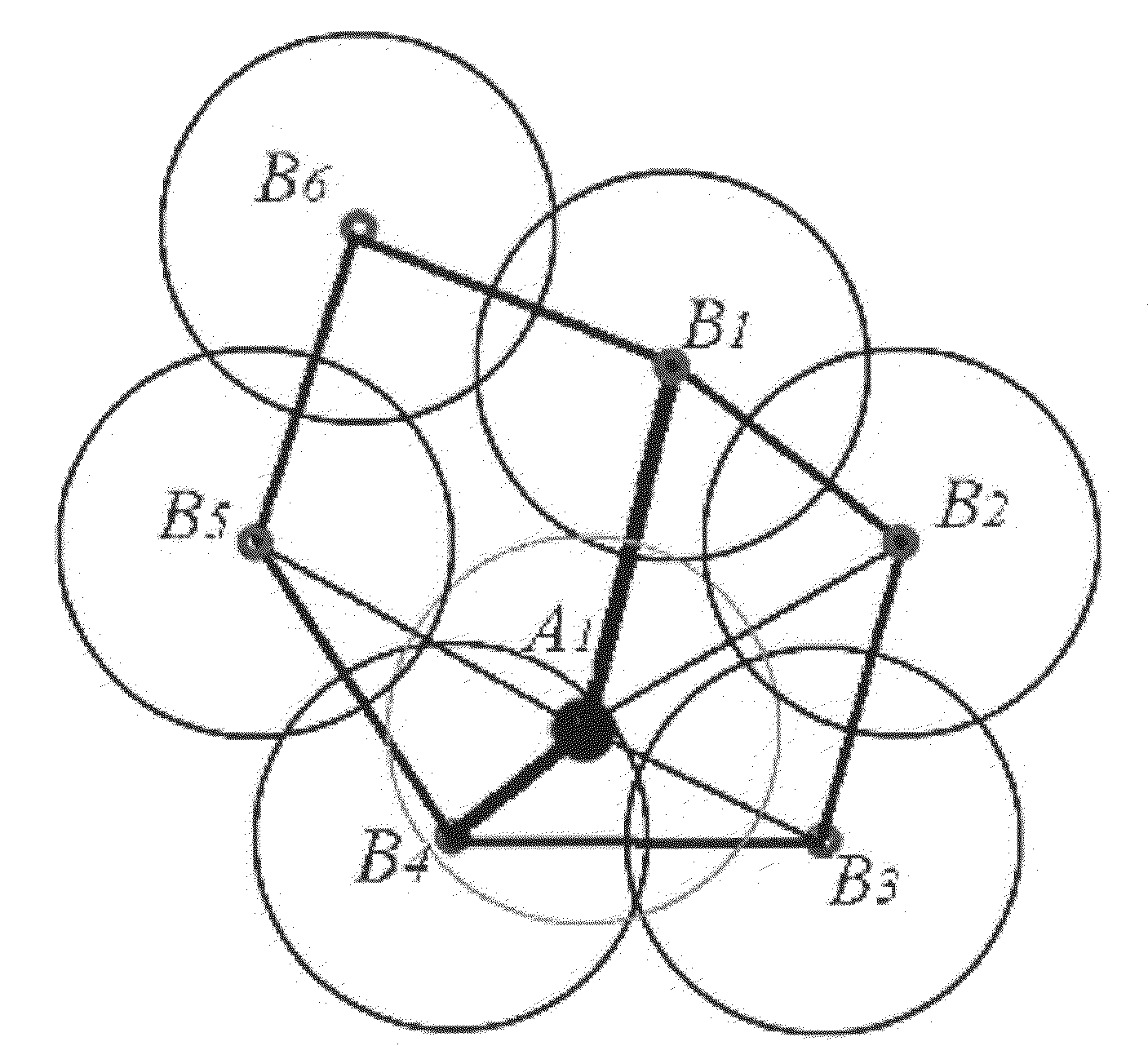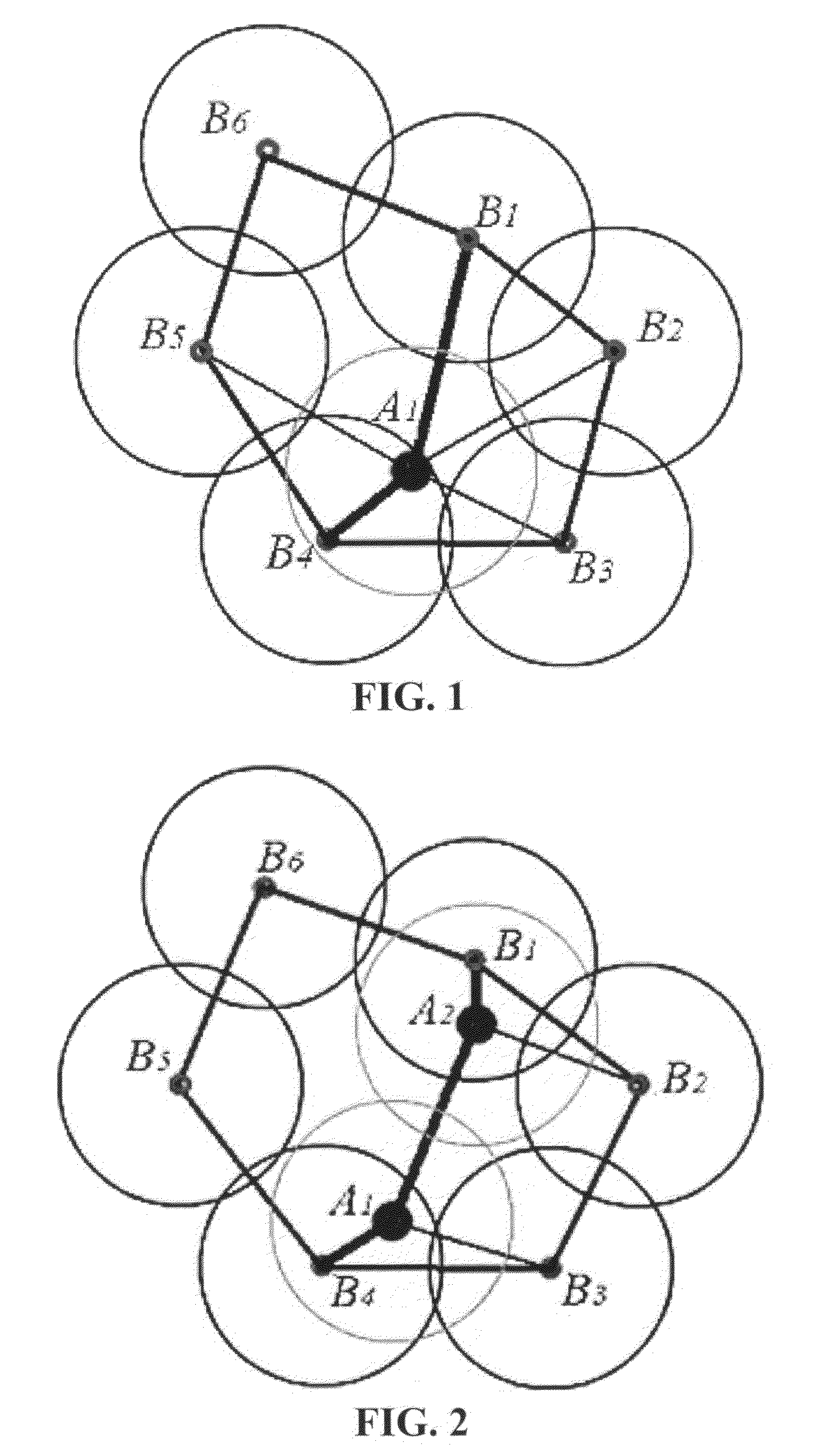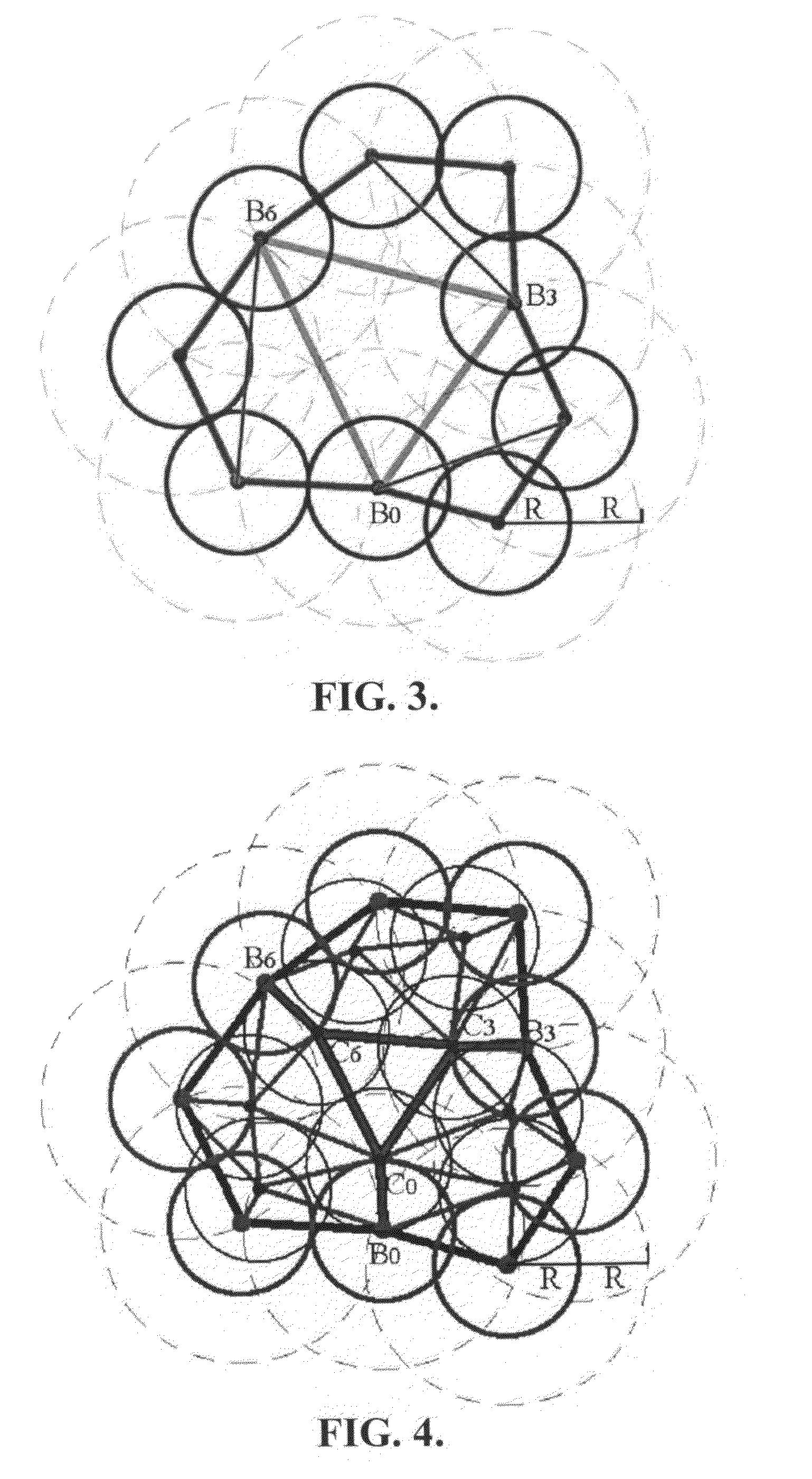Distributed hole recovery process using connectivity information
a technology of connectivity information and recovery process, applied in the field of coverage hole detection, can solve the problems of difficult to relax energy supply constraints, and often dynamic topology, so as to avoid single point failure and avoid high computational and storage capacity requirements
- Summary
- Abstract
- Description
- Claims
- Application Information
AI Technical Summary
Benefits of technology
Problems solved by technology
Method used
Image
Examples
Embodiment Construction
A. Detailed Steps for the Invention
[0031]When a hole is detected as being enclosed by a polygon with N edges where N>3, (with each edge being a link between two adjacent active boundary nodes), each of the N boundary nodes has and only has links to two neighboring nodes among the other N−1 boundary nodes, and has no links to the other N−3 boundary nodes. FIG. 1. shows an example of a hole enclosed by a polygon with 6 edges defined by 6 adjacent active boundary nodes {B1 B2 B3 B4 B5 B6}.
[0032]Assume that each node has been allocated a node ID, and becomes aware of the IDs of its neighbors, by the end of the initial phase of setting up the network. When running the distributed hole recovery algorithm, each of the N boundary nodes adjacent to a detected hole only has to transmit a message to the others once or twice at most during each hole recovery iteration. Therefore each can be allocated a timeslot in advance at the following distributed hole recovery step 1 in order to avoid conte...
PUM
 Login to View More
Login to View More Abstract
Description
Claims
Application Information
 Login to View More
Login to View More - R&D
- Intellectual Property
- Life Sciences
- Materials
- Tech Scout
- Unparalleled Data Quality
- Higher Quality Content
- 60% Fewer Hallucinations
Browse by: Latest US Patents, China's latest patents, Technical Efficacy Thesaurus, Application Domain, Technology Topic, Popular Technical Reports.
© 2025 PatSnap. All rights reserved.Legal|Privacy policy|Modern Slavery Act Transparency Statement|Sitemap|About US| Contact US: help@patsnap.com



